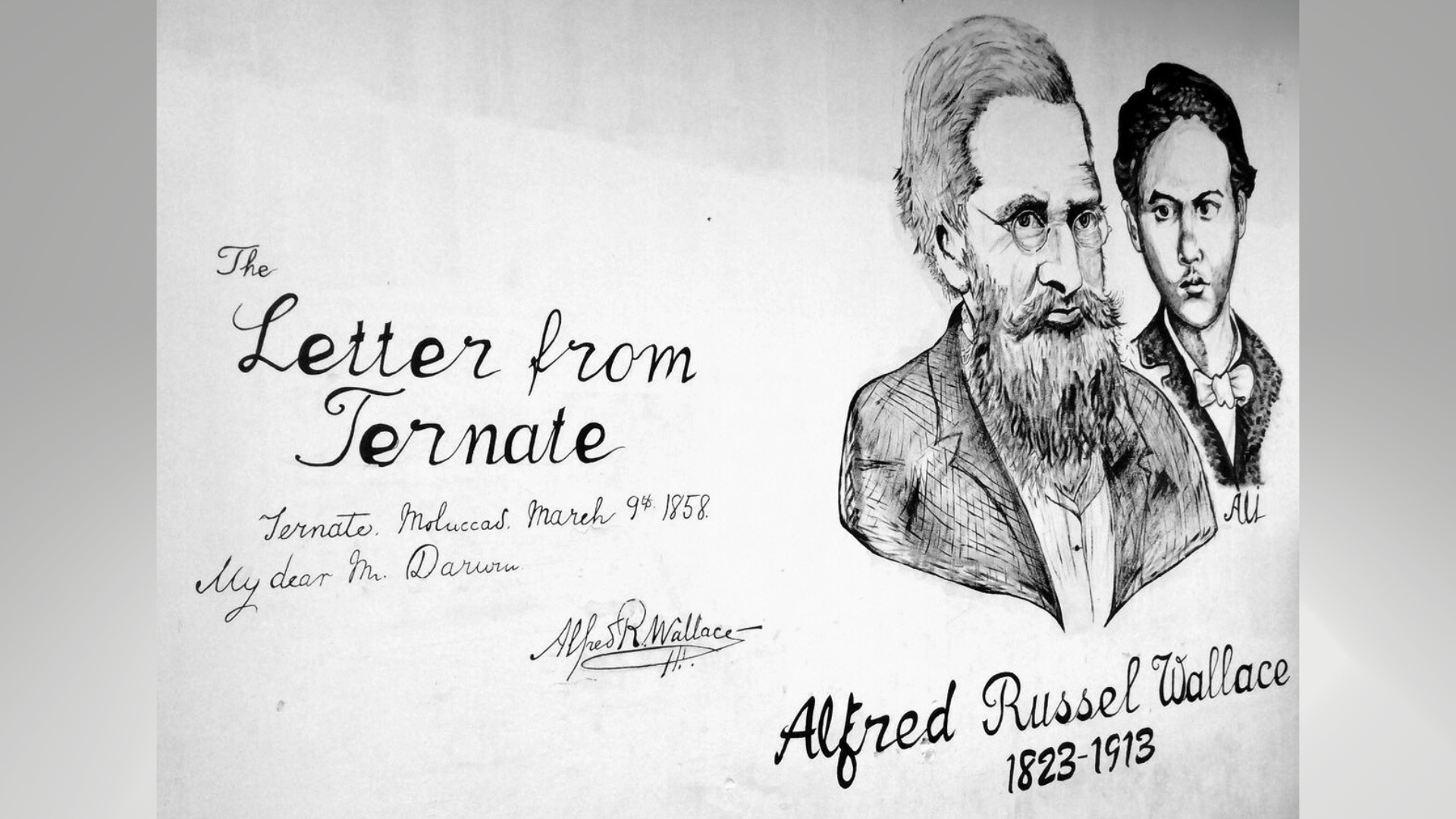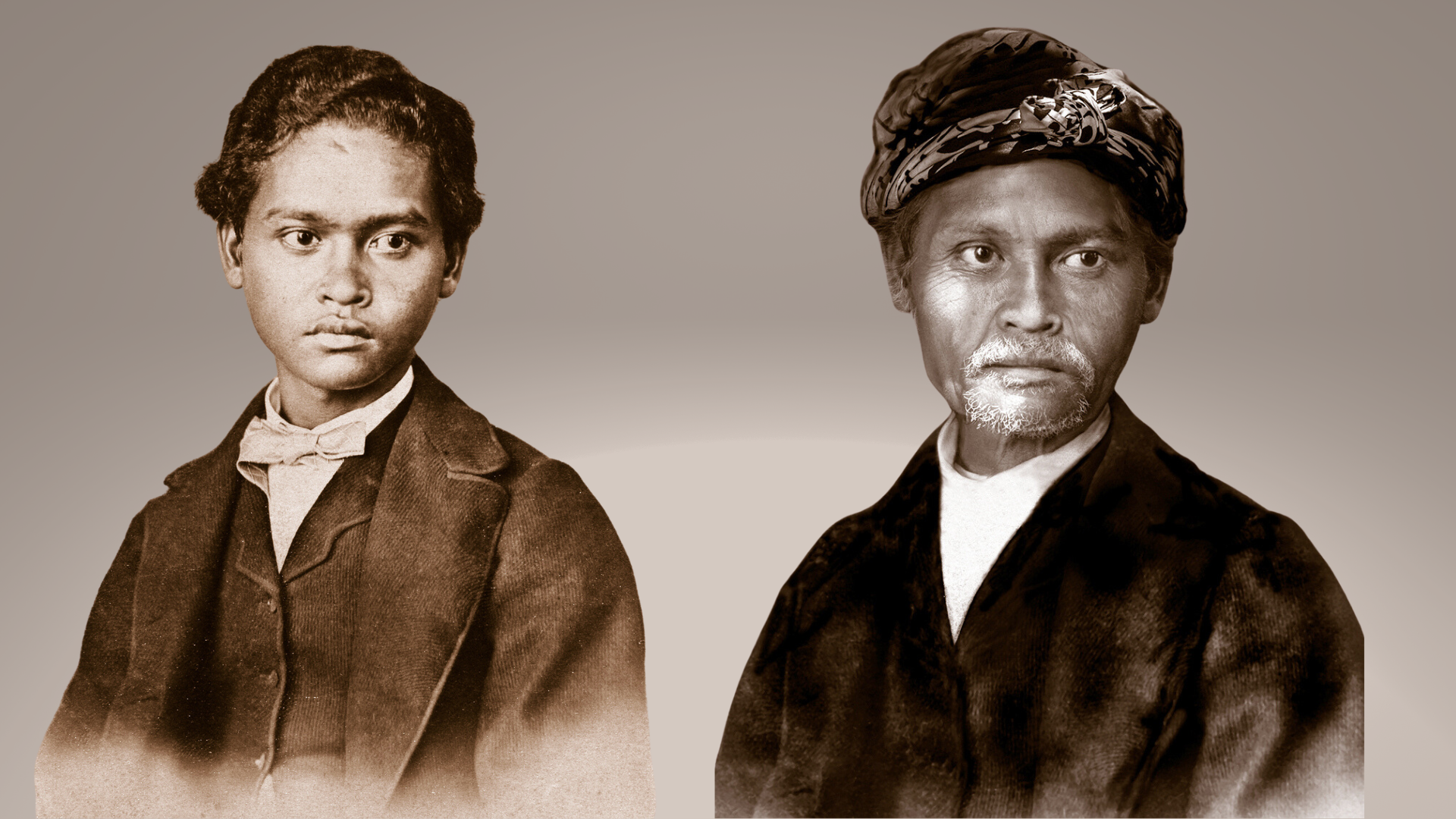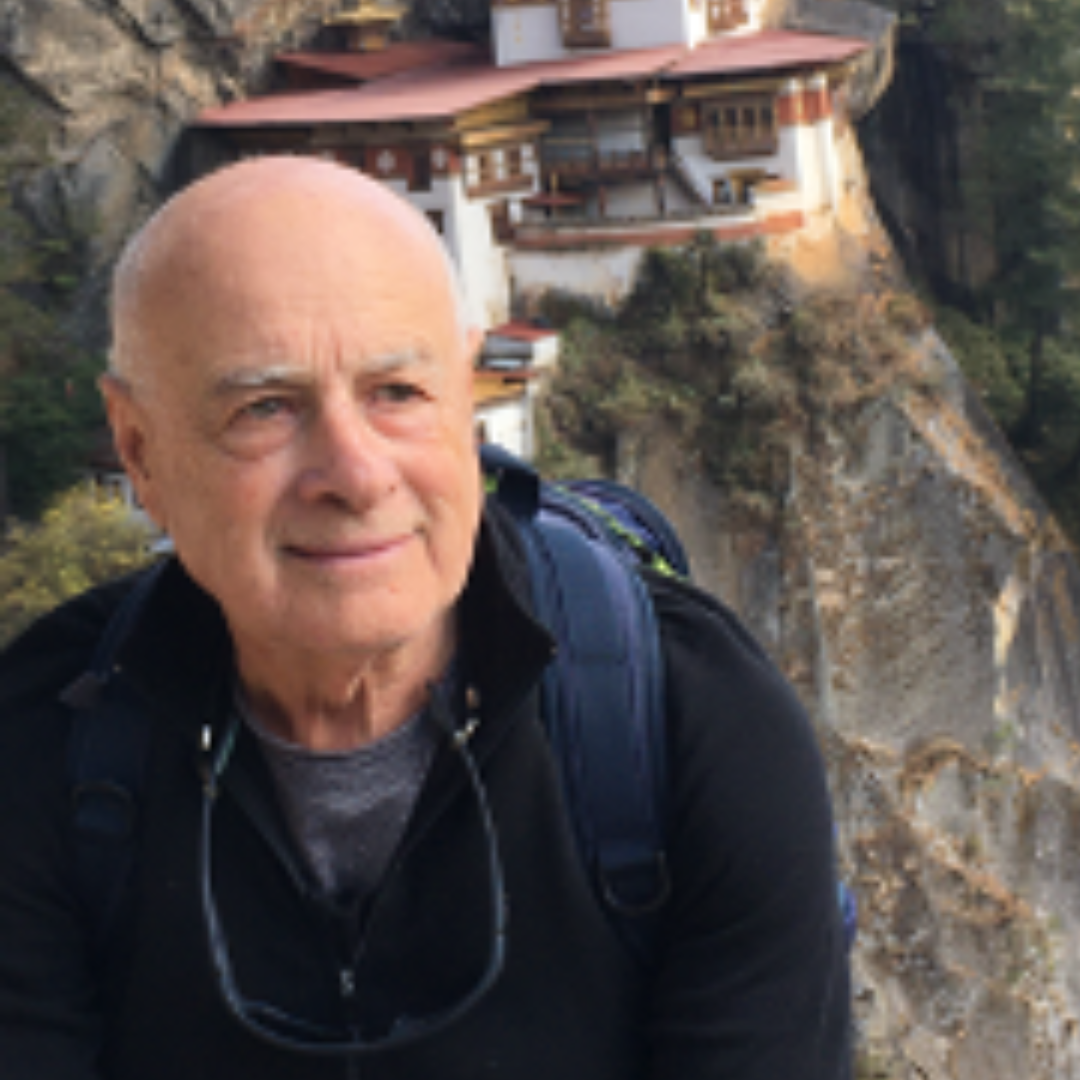What one correspondent learned by writing an “enhanced biography” of a little-known 19th-century teenager from Borneo.

The 15-year-old Malay, known to history only as “Ali” is featured on this graffiti signboard in Ternate, Indonesia. The artist refers to Wallace’s famous Ternate Essay, in which outlined his Theory of Evolution by Natural Selection. (Photo provided by Paul Sochaczewski.)
This article was produced exclusively for News Decoder’s global news service. It is through articles like this that News Decoder strives to provide context to complex global events and issues and teach global awareness through the lens of journalism. Learn how you can incorporate our resources and services into your classroom or educational program.
Consider the lives of great men and women who explored the curious corners of the world, who made momentous discoveries in science and technology, who created important works of art. We can safely say that such exceptional individuals were assisted by people who quietly helped them achieve greatness.
Now consider your own life. Has there been someone who has quietly aided you along the way but hasn’t received adequate recognition or thanks?
For more than 50 years I’ve been following the trail of Alfred Russel Wallace, one of history’s greatest naturalists, thinkers and social commentators. To summarize his eventful and productive life:
Wallace was born in 1823 in Usk, Wales just across the border from England. He left school at the age of 14, became interested in natural history (and the paranormal) and, in 1844 with his friend Henry Walter Bates, said: Hey, let’s go to the Amazon.
Consider the boyhood-chutzpah of that intention. Wallace, 25, and Bates 23, had never left England. They had no independent income; they had to gamble that the wildlife specimens they collected would earn them enough money to survive. They had no formal training in biology, taxonomy or collecting. Unlike other Victorian explorers they had no supporting infrastructure — no government support, no military backup. Wallace and Bates had no diplomatic status, no academic credentials. Neither spoke Portuguese.
A disaster, then redirection
Wallace’s four years on the Amazon and Rio Negro ended disastrously when the brig Helen, on which he was returning to England, caught fire. Wallace spent 10 days in a lifeboat before being rescued. He lost most of his collection and almost his life. He swore never to get on another boat.
But he did. He received a grant from the Royal Geographical Society to explore the Malay Archipelago, a region that includes today’s Singapore, Indonesia, Malaysia and Timor-Leste.
He was remarkably successful. His haul included 125,660 individual specimens, including 900 new species of beetles, 50 new species of butterflies, 212 new species of birds and, incredibly, 200 new species of ants.
He also independently developed the Theory of Evolution by Natural Selection. And he did this without a support system or guaranteed income or trust fund.
In the eight years he traveled in Asia, Wallace covered more than 22,000 kilometers and made some 100 different collecting expeditions, often sailing to tiny, isolated islands. In order to reach his rarely-visited destinations he often had to buy, borrow or build his own boat.
Survival in the Amazon forest
On arrival, he had to ask the local headman for permission to build a shelter in the forest. He suffered debilitating fevers, a multitude of injuries, deprivations and, we might imagine, loneliness. When it rained he and his collection got soaked. He had to fend off scavenging ants, rats and dogs who wanted to eat his specimens.
He had to try to identify what he had collected (and wrote several times of the joy of finding a new species) while preparing the shipment for the long voyage back to London.
Contrast Wallace’s experience with that of Charles Darwin.
Two decades earlier Darwin sailed around the world on the Beagle, a Royal Navy brig which was, in effect, a floating base camp. He had a safe, dry place to keep his supplies and specimens, military protection under King William IV’s flag and sailors on board who could do his laundry, cook for him and tend to him when he was seasick, which he was throughout the voyage.
Compared to other Victorian-era explorers, Wallace gave robust credit to the men he hired as collectors, carpenters, boatmen and porters; some 1,300 people, by one reckoning.
But primus inter pares was a 15-year-old Malay boy named Ali who Wallace hired in 1855 while in Sarawak. Now a Malaysian state on the island of Borneo, Sarawak was then under the rule of James Brooke, the famous “White Rajah” of Borneo.

Two images of Ali. To the left, he is about 22 when his photo was taken in Singapore in 1862 (Trustees of the Natural History Museum, London). On the right is a depiction by artist Kelly Cleary of an imagined image of Ali at age 67. (Images provided by Paul Sochaczewski.)
A life we can only imagine
Ali (we don’t know his full name) evolved into a reliable camp manager and preparer of bird skins. He was also an expert bird collector and, by some accounts, was responsible for shooting some 5,000 of the 8,050 bird specimens Wallace collected.
Wallace wrote that Ali was his “head man” and “faithful companion” and we can speculate that Wallace would not have been as successful as he was without Ali’s support.
And here are the suppositions and mysteries, which fascinate me more than the facts:
What did teenage Ali think of this tall, strange European man who swooned over a new beetle, cuddled a baby orangutan he had orphaned and lived rough in the forest? Did Ali giggle each time he heard Wallace speak in strongly accented Malay? If Wallace had asked, would Ali have returned to England with him? What did Wallace teach Ali? What did Ali teach Wallace? Where did Ali go after Wallace left, and what memories stayed with him? Can we find Ali’s descendants to spur a conservation movement? Could I speak with Ali’s spirit through a medium?
These questions have sparked my interest for some 50 years.
Can we reveal the “truth” about the past?
I find writing history to be a slippery exercise.
Most academic historians study peer-reviewed, multi-footnoted journal articles by respected researchers, dig through dusty letters and chronicles, then evaluate and triangulate until, like Agatha Christie’s elderly detective Miss Marple, they reach what to them is a convincing solution to a particular puzzle.
But a life, and therefore a history-of-a-life, is seldom as neatly binary as Agatha Christie might have us believe. Daniel Warner, author of An Ethic of Responsibility in International Relations, says: “In writing history there is no absolute ‘Truth,’ only a multitude of lesser lower-case facsimiles we might term ‘truths.’”
Most everything we consider as “fact” related to Ali comes from Alfred Russel Wallace’s writing. Wallace was a careful writer. He told us specifically how many moths he collected on 31 January 1855 on a Sarawak night that was dark and windy with heavy rain and the exact dimensions of his house in Ternate. He offered detailed descriptions of how to process sago. And he indicated the dimensions of the crania of individuals he described as of Malay, Papuan, Polynesian and Australian ethnicities.
Nevertheless, when writing about incidents and emotions he filtered his story. He selected and edited what he told us about his challenges and accomplishments.
We can’t fault him for this, because we all choose what to remember and how we choose to report it. Similarly, we, the listeners and readers, also process information in ways unique to ourselves. Can you remember, verbatim, word for word, a conversation you had an hour ago? Can you retell an event you participated in without amplifying, pruning, enhancing? It’s a like a non-stop game of Chinese whispers.
Facts paint an incomplete picture
With Wallace’s extensive writing (some 20 books, 600 articles and hundreds of letters) we learn quite a bit about the facts of his life.
But what about his inner life? What psychological triggers might have catalyzed Wallace’s desire to leave England and explore the world? How did he overcome the trauma of losing much of his South American collection — and almost his life — when the ship he was on caught fire and sank? How did he manage to compartmentalize so successfully? In “The Malay Archipelago,” for example, he writes about shooting and killing a female orangutan, rescuing the baby she had been nursing and trying to care for the infant. He wrote sentimental paragraphs about how cute it was, and then, when the baby died, boiling it and selling the skeleton to a museum in England.
And what went on in Ali’s mind? He was illiterate and left no written record. If he had left us letters or journals would he have limited himself to the “facts” of his travels with Wallace? Or would he have gone deeper?
The six-odd years he spent with Wallace took him places he couldn’t have imagined, with experiences that must have stayed with him for life. What was going through his head? What was the trigger to his wanderlust — was it a cultural trait, a personal imperative or just a way to earn money?
Why was he so loyal to Wallace? Did he have ambitions of his own or was he happy just to go along for the ride? Did he think Wallace was an entitled but silly white man who used perfectly good guns to shoot tiny birds for his collection instead of deer for a barbecue?
History told from just one perspective
And what about all those too-tall, too-loud, over-dressed white men whom Wallace called friends, with their impressive technology, huge houses and seemingly innate ability to read, write and apparently rule the world? Were they cash cows waiting to be milked? Were they to be respected, admired, even emulated? Or were they foreign interlopers, temporary irritants in Allah’s grand scheme of things?
I don’t have answers. I do have speculations and suppositions, a series of jigsaw pieces that seem to make sense.
Two responsible Englishmen of the period refer to a young man they hired pre- and post-Wallace who I think could well be Ali, but we have no definitive evidence. And a respected American naturalist visiting Ternate met an old man who identified himself as “Ali Wallace.” All tantalizing crumbs of information.
A straightforward factual record of Ali’s adventures would have been flat. Instead, I chose to try my hand at writing an “enhanced biography,” enriched with speculations, imagined conversations and informed guesses that might well be wrong, of a young man who quietly helped Wallace become one of the most successful explorers of the natural world.
The book also takes a hard look at “slippery truth,” examines the “historian’s dilemma” and, perhaps most important, asks the question: Is there someone in your life who has quietly helped you, perhaps without adequate recognition, on your journey?
Some questions to consider:
- When you write do you limit yourself to the hard “facts” or do you speculate on emotions, interactions and decision-points?
- Is your writing style skewed towards “cold” (facts, statistics, logic, good grammar, third person) or does it lean towards “hot” (emotion, questions, story, dreams, first person)?
- What sources do you trust when researching history? Why these and not others?
- Is there an Ali in your life — someone who has helped you but who hasn’t received adequate recognition or thanks? Conversely, have you been someone’s Ali?

Paul Spencer Sochaczewski graduated from George Washington University and served in the U.S. Peace Corps in Sarawak, a Malaysian state on the island of Borneo. He lived in Southeast Asia for 15 years, then moved to Switzerland where he was head of Creative Services at World Wildlife Foundation International. He has written 20 books and more than 600 by-lined articles in publications including News Decoder, The New York Times, Wall Street Journal, Reader’s Digest, Travel and Leisure. He gives presentations about Wallace, and other subjects, worldwide. He is French-American and lives in Geneva, Switzerland.
